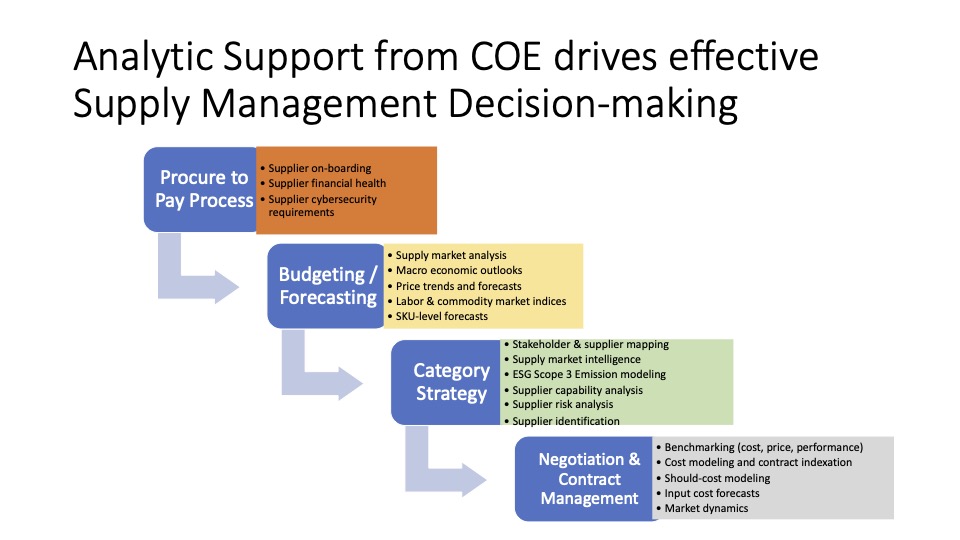Effects of Weather on the Supply Chain
Weather plays a big role in what consumers buy at the store or what customers buy from their suppliers. Producers must pay attention to this information because having the wrong product, in the wrong place, at the wrong time (1) can cost money and visibility.
Consumer reactions to weather can be the missing link in supply chain planning. Weather data should be applied early in the supply chain to develop targeting strategies for raw material purchasing, production scheduling, advertising and promotion, allocation and distribution, and price markdowns (1). There are many weather forecasting companies that partner with producers to give forecasts in relation to supply chain planning.
Products Influenced by Weather
In the winter, more snow boots, generators, shovels, and cold medications are bought. In the summer, sales of suntan lotion, garden items, and beach wear increase (2). The weather is a direct influence on the sales of these items. Several items have short time spans when they can be sold. For example, lawn and garden items have an average selling span of six weeks in the early spring. Seventy-five percent of sun care sales occur between Memorial Day and Independence Day. Of these sales, 25 percent occur within two days of each of those days. The weather during these times has a huge influence on what people buy.
Often, producers plan their demand on a set weather pattern from year to year. However, weather on a specific day or week is only similar from one year to the next a maximum of one in four times (2). Also, consumer choices vary across the country when weather changes. Based on surveys, consumers in Atlanta say the beginning of spring occurs at 60 degrees Fahrenheit but consumers in Detroit say it occurs at 50 degrees Fahrenheit (1). Therefore, weather trends over longer periods of time and in different regions of the country must be considered in demand planning.
Weather and Demand Planning
Chris Cawthorn of Strategic Weather Services, has developed a four-phase plan to determine what effect weather will have on product demand (2).
| Phase 1 | Create a Historical Analysis: Plot product sale:s by store location, product, and product category against the weather over time. This will give a positive or negative correlation to product sales with a certain type of weather. |
| Phase 2 | Assess Missed Opportunities: Referencing the historical analysis, analyze where sales could have increased if the weather would have been taken into consideration. This will give the company an idea of where additional sales could have occurred if demand planning had included a specific weather element. |
| Phase 3 | Create Product Demand Forecast: Using weather data, missed opportunities, and historical sales, product demand can be forecasted more accurately based on when the weather changes. This will help develop strategies for marketing, purchasing, production, and distribution. |
| Phase 4 | Develop a Future Planning Strategy: Develop a plan on how the company will use consumer demand intelligence with weather forecasts to predict demand. |
Weather Forecasting Assistance
The weather data market is worth billions of dollars. There are 35-40 players in the market including: Accuweather, Weather Services International, Weatherdata, and Weather Predict. Companies such as Wal-mart, Home Depot, and Sears can use weather information to direct products to locations where demand will increase due to weather changes (3). Energy companies such as Progress Energy and Duke Power, SCRC members, use weather data to determine peak times of power use by residential and business customers (3). Companies such as John Deere, an SCRC member, can monitor the country to see where spring temperatures appear first. The company will then be prepared to send extra lawn and garden supplies to the places where people have yard work on their minds.
Weather Predict, a Raleigh based company, provides weather services to the financial, energy, and yachting industries. The company is interested in growing by partnering with supply chain companies (3).
Supply chains provide a huge opportunity for growth for the weather predicting industry. Companies should stop using seasonal demand to predict sales and should use much more detailed demand data to predict the moment when sales will occur based on consumers reaction to the weather. Cawthorn says “forecasters who understand when and why the consumer buys will have a strategic advantage over their competitors (2).” The weather must be considered when making many supply chain decisions.
References:
(1) Cawthorn, Christopher. Sunny today, sales tomorrow. Bobbin, Vol. 40, Iss. 9. May 1999.
(2) Cawthorn, Christopher. Weather as a strategic element in demand chain planning. The Journal of Business Forecasting Methods and Systems, Vol. 17, Iss. 3. Fall 1998.
(3) Cox, Jonathan. Forecast Accuracy Pays. The Raleigh News and Observer, Feb. 26, 2004.
- Categories:


